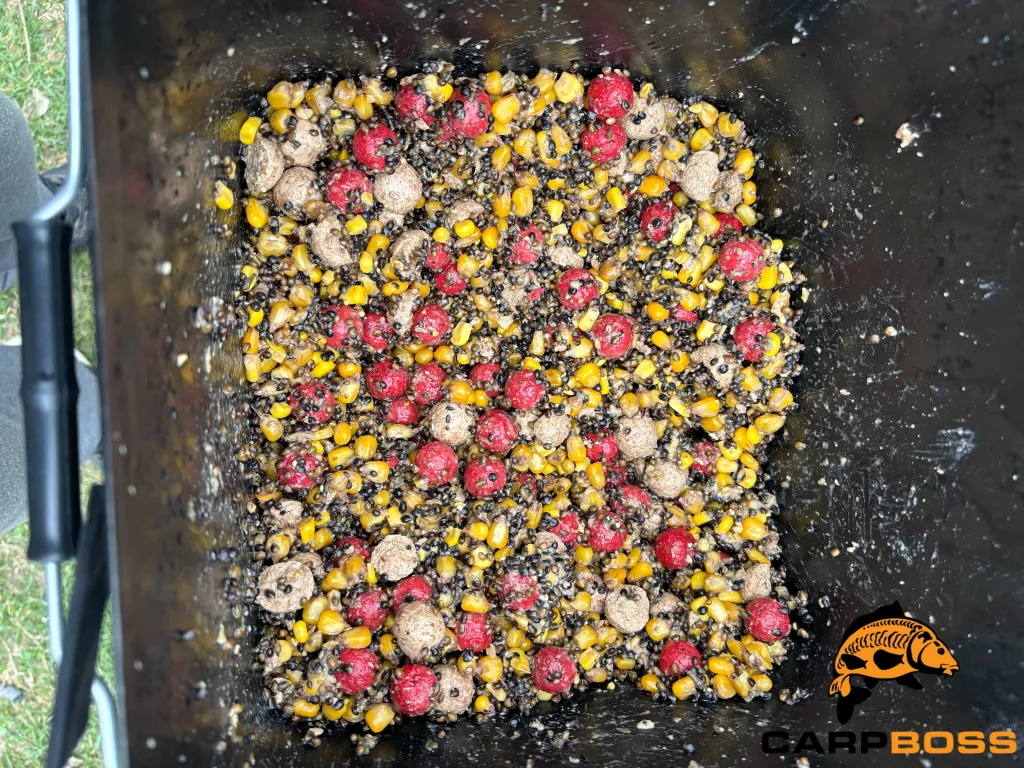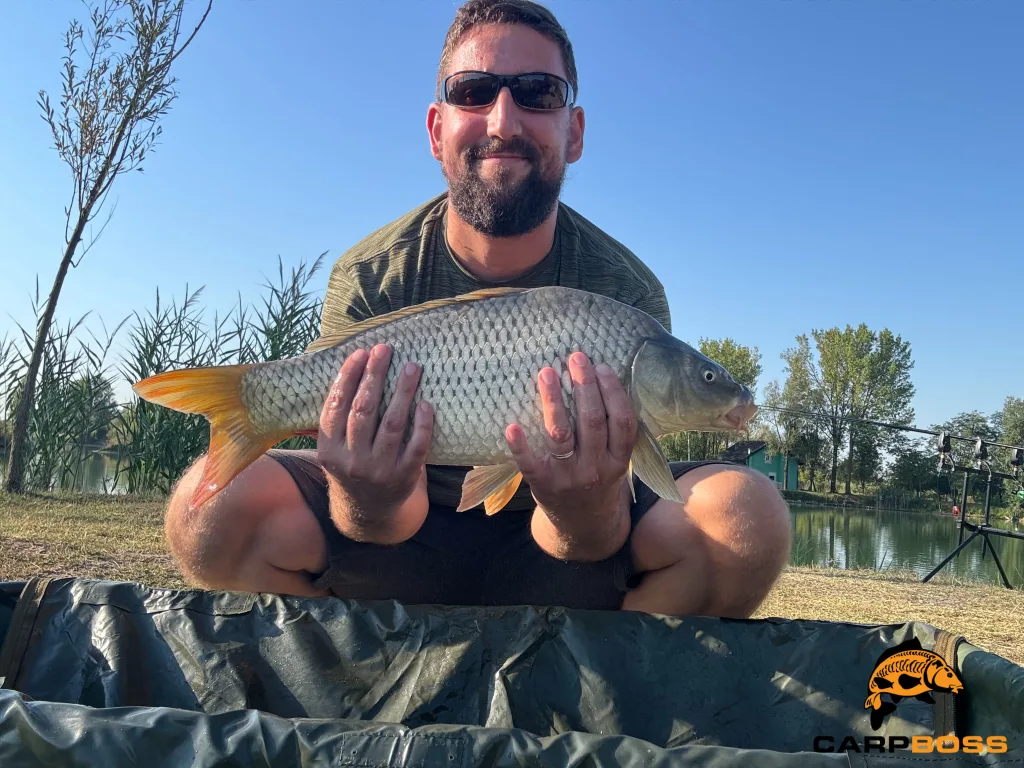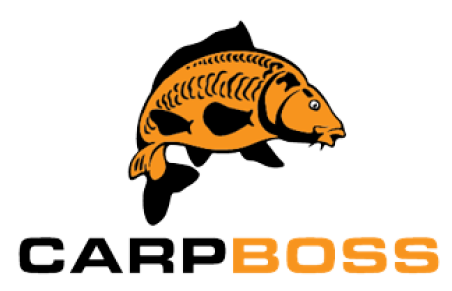Carp fishing is a passion of many. It’s one of the world’s most popular freshwater species in angling. The amount of time, energy and money carp anglers spend for that one perfect picture with a massive specimen is astonishing. Once you enter the world of carp fishing, you’ll be enticed for life. Every moment of your spare time will be spent exploring, learning, practicing, and executing that perfect cast, bait presentation, and landing that will lead to your new personal best. But if you are reading this, it means you are not there yet and you just want to learn the basics. So without further ado let’s proceed so you can learn everything you need to know on how to catch a carp.
Overview of Cyprinus Carpio
The Cyprinus carpio, commonly known as the carp, is a resilient freshwater fish found in rivers, lakes, and ponds across Asia, Europe, and North America. Known for its adaptability, the carp established itself in diverse aquatic environments and is recognized for its size and strength.
In Europe, several carp species are prevalent, including the Common Carp, Leather Carp, Mirror Carp, and Grass Carp. The Common Carp, distinguished by its barbels and laterally compressed body, is the most widespread species, originally introduced for food and sport fishing. With a varied diet and a tendency to thrive in both still and flowing waters, Cyprinus carpio has become an integral part of freshwater ecosystems. It’s also growing in popularity among sport fishermen who appreciate the challenge of catching these powerful fish.
Learn how to catch grass carp with corn! Reeling in one of these big boys is extrodinary adrenaline rush.
How To Catch a Carp – Identifying Optimal Fishing Locations
When it comes to successfully catching carp, selecting the right fishing location is crucial. Carp are known to be opportunistic feeders and can often be found in bodies of water where food is abundant. Here are some key factors to consider when identifying optimal fishing locations for carp:
- Vegetation and Cover: Carp tend to thrive in areas rich in plant life and vegetation. Look for spots with submerged plants, reeds, and overhanging branches. These features not only provide cover for the fish but also attract insects and other small creatures that carp feed on. Areas with abundant aquatic vegetation are particularly ideal, as they offer both food and shelter.
- Water Depth: Understanding the depth of the water is essential for targeting carp effectively. During warm weather, carp are more likely to be found in shallow water where temperatures are more comfortable. Conversely, in colder months, they often retreat to deeper water. Ideally, select a location where the depth varies, allowing you to adjust your technique based on seasonal changes.
- Structure and Bottom Composition: Look for areas with structured bottom compositions, such as rocks, gravel beds, or fallen trees. Carp are known to forage on the bottom, so these features can provide plenty of carp’s favorite food. Additionally, consider fishing in spots where the bottom transitions from hard to soft substrate, as this can be a hotspot for feeding activity.
- Current and Flow: When it comes to river fishing, observe the current. Carp often position themselves in slower-moving water where they can easily access food carried by the flow. Look for eddies, pools, or areas behind obstacles where carp might be hiding from the current.
- Comfort and Accessibility: Lastly, choose a location where you can sit comfortably for extended periods. Carp angling often requires patience, so a spot with a good view and easy access for casting and retrieving your gear is preferable. Ensure you’re prepared for weather changes and that the location allows for a relaxing fishing experience.
Recognizing Feeding Feeding Habits
Natural Diet of Carp
Carp are omnivorous fish with a diverse natural diet that primarily consists of a variety of aquatic organisms and plant materials. They thrive on insects, larvae, snails, shrimps, and beetles, which they often forage among aquatic vegetation.
Additionally, carp consume various plant seeds and tubers, making them opportunistic feeders that adapt their diet based on available resources. Larger fish may also indulge in crayfish and mollusks, such as freshwater clams and zebra mussels. This adaptability allows carp to exploit different food sources throughout the year, ensuring they remain close to areas rich in nutrients, such as weedy shallows, riverbanks, and locations where natural food sources are abundant. Understanding their natural diet is essential for carp anglers seeking to mimic these sources with appropriate bait, ultimately enhancing their chances of a successful catch.
Seasonal Feeding Patterns
Carps exhibit distinct feeding habits and needs that vary with the seasons, influenced by water temperature and environmental conditions. In winter, their metabolism slows significantly, leading to reduced feeding activity. In spring, as the water warms, carp become more active, venturing into shallower waters to forage and prepare for spawning, making them more susceptible to hook bait.
During the summer months, wary carp bask in the midday sun near the edges of deeper waters, where they feel safe while still actively searching for food. They often feed aggressively under the cover of darkness, making early morning and late evening the prime times for anglers. As the water cools again in autumn, carp continue to feed in preparation for the winter, yet their activity levels will vary with fluctuating temperatures. Understanding these seasonal patterns allows anglers to optimize their strategies for catching carp throughout the year.
How To Catch a Carp – Best Times of Day for Carp Fishing
Timing can significantly impact your success. Generally, carp are most active during the early morning, early evening, and at night. These peak activity times align with their feeding patterns. Carp tend to forage more aggressively under the cover of darkness, making dawn and dusk prime periods for fishing.
Seasonality also plays a crucial role in determining the best times to fish for carp. In winter, carp move to deeper areas. Conversely, during the warm summer months, carp bask in the midday sun in warmer water, but remain near deeper areas for safety. This means that while carp can be caught year-round, adjusting your fishing times according to the season can enhance your chances of a successful catch. Always be mindful of the local climate and water conditions to optimize your fishing experience.
How To Catch a Carp -Carp Angling Techniques for Beginners
Carp fishing can be rewarding and enjoyable for both experienced anglers and beginners. Two of the most common techniques you’ll want to familiarize yourself with are float fishing and bottom fishing. Each method has its advantages and can be used effectively to catch carp, making them perfect options as you start your carp angling journey.
Float Fishing
Float fishing is a straightforward and visual way to catch carp. This method involves using a float (or bobber) to suspend your bait at a certain depth in the water. The float allows you to see when a fish is biting, as it will bob, dip, or disappear under the water when a carp takes the bait.
To get started with float fishing, you’ll need a few essential pieces of equipment:
- A suitable rod and reel: A medium-action fishing rod is ideal for beginners, paired with a reel that can handle 8-10lb line strength.
- A float: Choose a float that suits the depth of the water you’ll be fishing in. A larger float is useful for rougher conditions, while smaller floats work well in calmer waters.
- Hooks and bait: Use size 8 hooks and simple baits like sweet corn, bread, or bait pellets.
Bottom Fishing
Bottom fishing is another popular technique that beginners can easily master. As the name implies, this technique involves placing your hook bait on or near the bottom of the waterbed, where carp often feed.
To set up for bottom fishing, you will need:
- A sturdy rod and reel: Similar to float fishing, a medium-action rod with a strong reel is recommended.
- A specific rig: One of the simplest rigs to start with is the ‘hair rig’. This allows the bait to be presented separately from the hook, making it easier for carp to eat it without feeling the hook immediately.
- Baits: Common, attractive baits for bottom fishing include boilies, bags of pellets, corn, and dough balls. You can also use commercially prepared ground baits to create a feeding spot.
12ft or 13ft rods are the best choice for bottom fishing due to their ability for distance casting and curve test of up to 5 lb.
Choosing the Right Bait for Carp
When it comes to attracting carp, selecting the right bait is crucial for a successful fishing experience. Among the most popular options are boilies, which are a favored bait among many carp anglers. These round, protein-rich balls made from fish or milk proteins, grains, and eggs come in an array of colors and flavors, making them versatile for targeting different carp species and sizes of carp. Their strong scent, especially fishmeal-based varieties, can entice even the most cautious fish.
Another excellent option is pellets, which are compact and nutrient-dense. These can be used on their own or as part of a groundbait mix to create a feeding frenzy. Groundbait itself can be an effective method to attract carp. It releases enticing scents and particles into the water, drawing fish to your chosen fishing spot.
Sweet corn is another top choice that carp simply can’t resist. The combination of salty and sweet flavors, along with its bright color, makes it an easy and effective bait even in murky water.
For delivering bait into the water, techniques such as spodding and using bait boats are most popular among carp anglers. Spodding involves using a specialized bait container and carp spod rod to cast large quantities of bait over a distance, creating a targeted feeding area.

Bait boats offer a high-tech alternative, allowing anglers to remotely deploy bait precisely where they want it, even in difficult-to-reach spots. Both methods are effective for ensuring that your bait is presented accurately and can significantly enhance your chances of a successful catch.
By choosing the right bait and employing effective delivery techniques, you can increase their likelihood of attracting this intelligent fish and achieving a rewarding fishing experience.
How to Catch a Carp – Most Effective Rigs
The right rig can make all the difference in your success on the water. Three popular and effective rigs among carp anglers are the Roonie Rig, D-Rig, and Hair Rig. Each of these rigs has specific advantages that can help you land that prized catch. Here’s a closer look at each one, along with some handy tips to enhance your carp fishing experience.
Ronnie Rig
The Ronnie Rig is designed for versatility and stealth. It features a lead that can slide on the line, allowing for a more natural presentation of the bait. This rig is especially effective in weedy or snag-prone areas where carp often dwell.
Tips:
- Use a Strong Leader Line: Given the rig’s sliding nature, a robust, abrasion-resistant leader line can withstand the sudden pulls of a fighting carp.
- Adjust Bait Size: Experiment with different bait sizes. Smaller baits can entice more cautious carp while larger baits can attract fish of heavier weight.
If you want to learn more about carp leaders and what they are, check out my article dedicated to this topic!
D-Rig
The D-Rig is a favorite among seasoned anglers for its ability to present the bait as naturally as possible. It features a D-shaped loop that allows the bait to sit off the bottom, reducing the chances of the carp detecting the line.
Tips:
- Choose the Right Hook Size: Match your hook size to the size of the bait used. A well-balanced hook will enhance your hook-up rates.
- Baiting Method: Use buoyant bait on the D-Rig to keep your hook point exposed. This makes bait accessible even in heavily weeded areas where grass carp lurks.
Hair Rig
The Hair Rig is perhaps the most well-known carp rig, designed to keep the bait free from the hook. This allows for more natural movement, increasing the chances of a successful hook-up as the carp can take the bait without feeling the resistance of the hook.
Tips:
- Use Soft Baits: Experiment with soft baits like corn or boilies that can easily be threaded onto the hair without hindering movement.
- Monitor Bait Presentation: Ensure the bait is positioned correctly on the hair to allow it to move freely. A well-presented bait will look like a real mouthful to carp.
Must Know Practices For Beginner Carp Anglers
As a beginner carp angler, ensuring the well-being of the fish and the environment is just as important as honing your fishing skills. Here are three must-know practices to enhance your fishing experience while promoting responsible angling:
1. Embrace Catch and Release
Catch and release is a fundamental practice that helps maintain carp populations and supports the health of aquatic ecosystems. When you catch a carp, consider whether it is necessary to keep it or you can release it back into the water. If you choose to release the fish, handle it gently to minimize stress and injury. Avoid lifting the fish by the gills or squeezing it too tightly, as this can cause harm. Instead, use wet hands or a landing net to support the fish’s body when removing the hook. If possible, remove the hook underwater to reduce the time the fish spends out of its natural habitat.
2. Use Antiseptic for Hook Wounds
In the case of foul-hooked fish where carp is hooked deeply or sustains any injury, applying an antiseptic can help prevent infection and promote healing. Carry an antiseptic solution specifically designed for fish, which can be found at most fishing supply stores and bait shops. After unhooking the fish, gently apply the antiseptic to any wounds or abrasions before releasing it back into the water. This small act can significantly improve the fish’s chances of survival and overall health.
3. Prioritize Fish Safety
Fish safety should always be a top priority for anglers. This includes not only how you handle the fish but also the environment in which you fish. When handling carp, keep them in the water as much as possible to avoid stress and dehydration. If you need to take a photo or measure the fish, use a wet mat to minimize damage to their sensitive skin. Additionally, be mindful of the temperature of the water. Avoid fishing during extremely warm weather when carp may already be stressed. Finally, ensure that your fishing gear—such as hooks and lines—is of the appropriate size to avoid injury to the fish.

Conclusion
Catching carp can be a rewarding experience for anglers of all skill levels, especially beginners. I’ll never remember the feeling when I landed my first carp. It’s a memory I’ll cherish forever.
By understanding the best techniques, selecting the right gear, and prioritizing responsible fishing practices, you can enjoy a successful and fulfilling day on the water. Remember that the joy of fishing lies not only in the thrill of the catch but also in the respect and care we extend towards our aquatic companions and their habitats.
Embrace the journey, be patient, and may your carp fishing adventures bring you plenty of memorable moments.

Pingback: How to Make Fishing Bells - Carp Boss